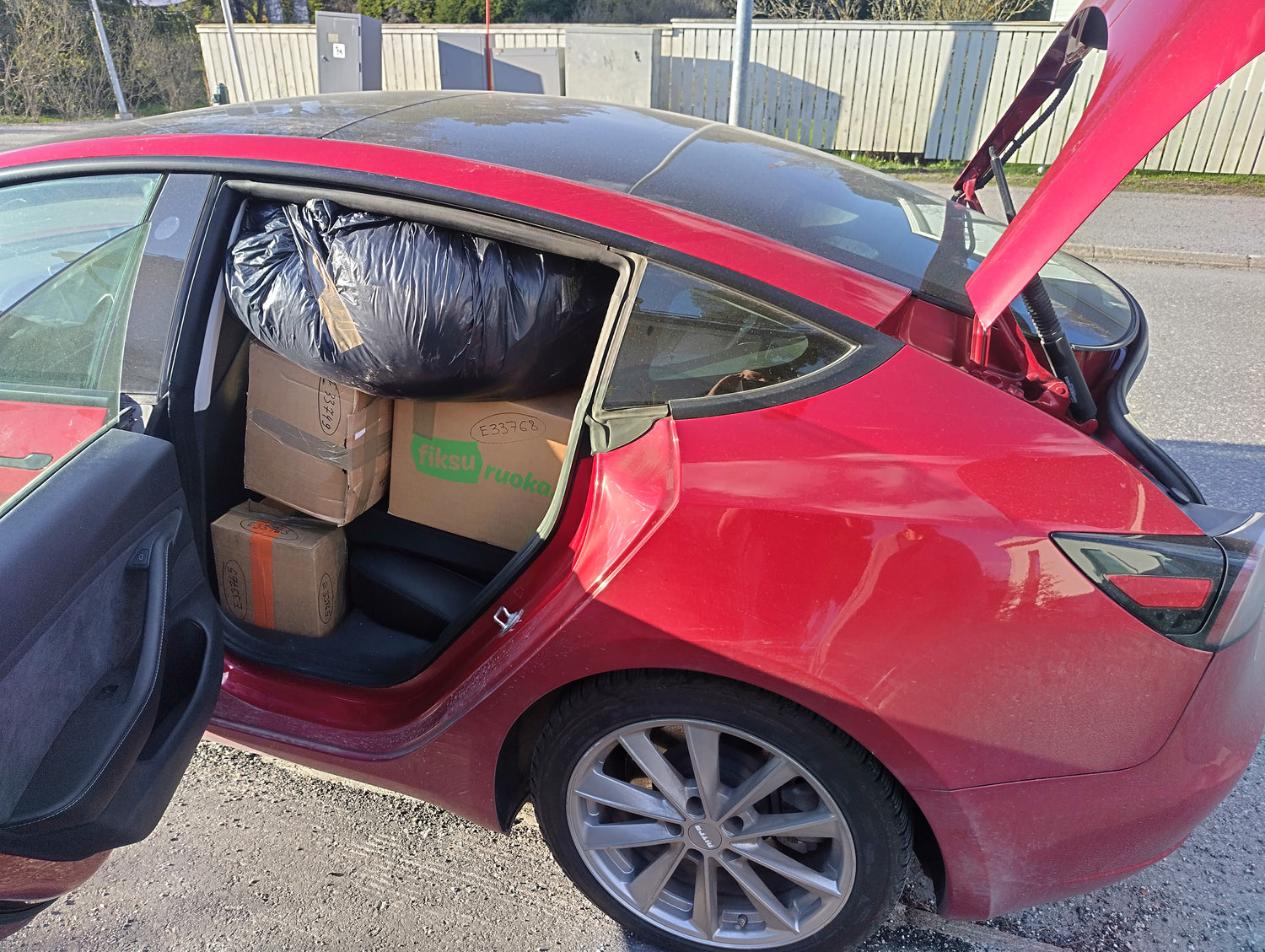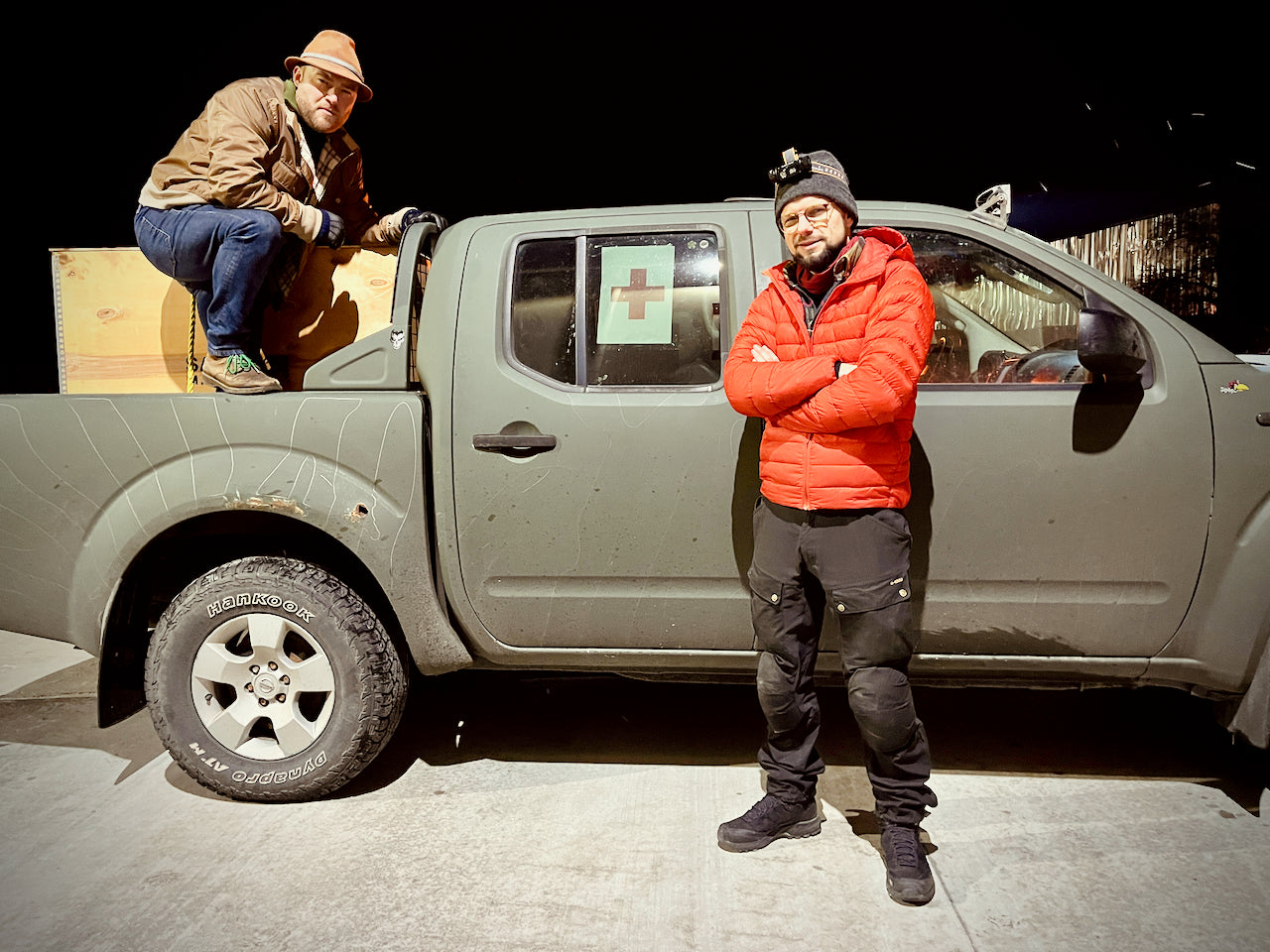Small deliveries consisting of one or two cars with equipment to Ukraine can sometimes be planned and executed in less than a week. When the size and ambition grow, so do the amount of work and preparations required. For Sisua Rajalle! the planning and preparations have been ongoing for months, yet many major decisions were made just in the final days. The last four cars in the convoy were acquired the day before departure, and some larger equipment was purchased on the same day we left.
These late purchases are largely due to donations coming in sporadically, and it is only in the very last days that we can know what the final budget will amount to. But that's not the whole truth; last-minute decisions sometimes also have to be made when the main plan fails or new information emerges. Anyone who has organized larger events will recognize this.
For my part, a lot of time during the final weeks leading up to departure was spent acquiring and preparing a fire truck - something that was a completely new area for me. We won the fire truck in an auction and picked it up from Lappeenranta, but it came almost without equipment. We were in contact with four different rescue services in various locations and managed to arrange some small items, but almost all rescue services have already sent all surplus equipment to Ukraine, so there was a lot missing. Our recipients had sent a wishlist of equipment they needed, and although some of the items were everyday (chainsaw, spotlight), there was a lot of very specific terminology that was very foreign to us. Up until the day of departure, I therefore worked to get as much as possible of what was still missing, and we might try to pick up some along the way down to Ukraine.


Marcus and Andreas had the main responsibility for planning the route and schedule, which is much more demanding than it might sound. With twelve vehicles in the convoy, you don't just stop anywhere, there needs to be plenty of parking space. Hotels and restaurants must all be pre-booked and have room for our ~25 participants, and even that number fluctuated right up to the last days. We must move at the pace of the slowest vehicles and have plenty of time for potential mishaps along the way. With the vehicles in varying conditions, there's a high risk that one of them will encounter problems during the long journey. Communication is done with radios, because it's simply not feasible to call everyone if something urgent happens, and drivers cannot check group chats.
Packing the vehicles also takes a lot of time and effort when we're talking about shipping containers and several vans. The goods must be coordinated to the same places as the vehicles and packed in a way that is legal and safe, which not just any volunteer can handle. Then there is the physical moving and packing of large quantities of goods, a heavy job that can require quite a bit of physical strength, depending on what kind of goods are involved. For example, our cargo included tens of portable tables weighing 50 kg each for hospital use. They can't be placed under anything else but take up a lot of space. Almost all of them must therefore be lifted on top of other goods, usually a lift of a meter or more. It's not the most ergonomic work, and it's sweaty!


Last and finally, the legal aspects must be taken care of. Importing goods to Ukraine (or rather exporting from the EU) - even as humanitarian aid - is not the easiest and requires a lot of paperwork. Fortunately, we have our experienced Ukrainian legal colleagues who are well-versed in what is required and ensure that we are covered. This saves a tremendous amount of time at customs, where in the worst case, you could end up sitting for days (or not be let in at all) if the paperwork is not in order.
After a few weeks of stress over getting everything in order, it actually feels like the journey itself will be calm and relaxing in comparison!



Leave a comment
This site is protected by hCaptcha and the hCaptcha Privacy Policy and Terms of Service apply.